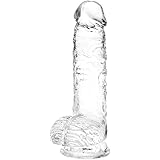Understanding Female Attraction: Decoding What Draws Women In and the Impact of Tit and Ass Pics

Introduction to Female Attraction
Female attraction is a multifaceted phenomenon that encompasses a variety of biological, psychological, and social influences. Understanding what draws women in requires an exploration of these complex factors, which can vary greatly among individuals. Evolutionary psychology posits that certain traits have historically been favored in mating contexts. These traits, such as strength, resourcefulness, and emotional stability, often continue to be attractive to women today, as they may signal an individual’s ability to provide and protect. However, the nuances of attraction extend beyond mere evolutionary considerations.
Social influences play a significant role in shaping what women find appealing. These influences can be derived from cultural norms, media portrayals, and peer interactions. For instance, exposure to idealized images and lifestyles can create specific standards of attractiveness that women might subconsciously adopt. This phenomenon raises essential questions about the impact of visual stimuli, such as social media images focusing on physical attributes, including body shape and style. The prevalence of tit and ass pics on platforms like Instagram emphasizes this dynamic and suggests that physical appearance plays a crucial role in initial attraction.
Despite the significant influences of biology and society, individual preferences remain paramount in the study of female attraction. Each woman has her own unique set of criteria that can influence her attraction to potential partners. Factors such as personality traits, shared values, emotional connection, and shared interests contribute significantly to what resonates with her. As such, it is essential to recognize that attraction is not only about physical appearance but also about a blend of emotional and intellectual compatibility. This intricate balance of influences and individual variations sets the stage for a comprehensive understanding of female attraction, paving the way for deeper insights into what specifically captures women’s interest.
The Psychology Behind Attraction
The intricate dynamics of attraction are profoundly influenced by psychological theories that offer insights into why individuals are drawn to one another. One significant perspective is based on evolutionary psychology, which suggests that mate selection is influenced by innate preferences aimed at maximizing reproductive success. From this standpoint, women might gravitate toward traits indicative of genetic fitness, such as physical health, social status, and resources. These factors are believed to enhance the perceived desirability of potential partners, thereby impacting attraction and mate choice.
In addition to evolutionary factors, biological components also play a crucial role in attraction. Research indicates that pheromones—chemical signals that elicit social responses—may influence a woman’s attraction to a partner. These odorless substances can create subconscious perceptions of compatibility and desirability, potentially guiding preferences during the initial stages of attraction.
Another dimension to consider is the impact of personal experiences and cultural background. A woman’s formative experiences, along with the values and beliefs upheld by her community, can shape her perceptions of attraction. For example, exposure to certain traits or behaviors perceived as attractive within one’s cultural context can create specific standards and expectations for partners. Furthermore, individual personality traits, such as openness to experience or neuroticism, may affect the qualities one finds attractive in others, thus adding layers of complexity to the allure of interpersonal relationships.
Ultimately, understanding the psychology behind female attraction requires a multifaceted approach. By integrating evolutionary theory, biological factors, and personal experiences, we can better comprehend the nuances that contribute to attraction. This insight not only enhances our grasp of human relationships but also provides a foundation for understanding how factors such as physical appearance, including images, may influence women’s attraction to potential partners.
Key Traits Women Are Drawn To
When examining the complexities of female attraction, certain traits consistently emerge as particularly appealing in men. Numerous studies reveal that attributes such as confidence, humor, and kindness rank highly on the list of qualities that draw women in. Confidence is frequently identified as a key trait; it conveys self-assuredness and signifies the ability to navigate life’s challenges. Research conducted by various institutions has found that women often perceive confident individuals as more attractive, associating this trait with leadership potential and social dominance.
Furthermore, humor plays an instrumental role in attraction. A study published in the Journal of Personality and Social Psychology indicated that women often prefer men who can make them laugh. The ability to elicit laughter not only fosters a sense of emotional connection but also showcases intelligence and creativity. Humor serves as a social lubricant, enhancing interpersonal interactions and making the individuals involved feel more at ease. In romantic settings, shared laughter can act as a powerful bonding mechanism.
Kindness is another crucial trait that contributes to long-term attraction. Research has shown that women are often more inclined to pursue relationships with men who exhibit empathetic and caring behaviors. This trait is indicative of a partner who will be supportive and nurturing, thus fostering a sense of security within the relationship. Studies reveal that kindness enhances the perception of a man’s overall desirability, as it indicates an individual who is likely to invest emotionally into a partnership.
These traits—confidence, humor, and kindness—are not only sought after during the initial attraction phase but also prove to be vital for sustaining long-term relationships. In essence, they contribute significantly to the chemistry that evolves between partners. Understanding these key attributes can provide valuable insights into the dynamics of attraction among women.
The Role of Physical Appearance
Physical appearance plays a critical role in female attraction, shaped by both biological instincts and societal norms. From an evolutionary perspective, certain traits are often considered attractive as they signal health and vitality. For instance, characteristics such as clear skin, symmetrical features, and a fit body are frequently associated with genetic fitness and reproductive success. These biological underpinnings lead to a natural preference for partners exhibiting these traits.
However, societal standards of beauty also influence perceptions of physical attractiveness. Cultural variations define and reshape beauty ideals, which may include traits such as body shape, hair texture, and skin tone. As beauty trends evolve, so too do the attributes deemed appealing. For example, contemporary trends may favor curvier figures or a toned physique, reflecting changing attitudes towards body image and health. Additionally, grooming plays a significant role in how women perceive attractiveness. A well-groomed individual often conveys signals of self-care, indicating not only physical health but also a certain level of social status and personal investment. Thus, grooming practices, such as hair style and hygiene, contribute significantly to attraction.
Furthermore, the impact of strength and fitness cannot be understated in discussions surrounding female attraction. Many women are drawn to partners who exhibit an active lifestyle, not only because it aligns with health-conscious values but also because physical strength can be perceived as a protective trait. This attraction to strength—a reflection of potential support and security—can manifest in both subtle and overt ways.
In summary, while physical appearance undoubtedly influences female attraction, it is essential to recognize that these perceptions are frequently interwoven with biological instincts and societal norms. As cultural definitions of attractiveness evolve, so too does the landscape of physical attraction, reinforcing the importance of understanding diverse perspectives regarding beauty.
The Impact of ‘Tit and Ass’ Pics on Attraction
The prevalence of ‘tit and ass’ pictures on social media platforms and dating applications has become a topic of significant discussion in the context of female attraction. These images, often characterized by explicit or suggestive visuals, can elicit immediate physical attraction, leveraging primal instincts centered on sexuality. Research indicates that visual stimuli, particularly those emphasizing physical attributes, can trigger a swift response, influencing initial perceptions about desirability.
Moreover, ‘tit and ass’ images serve a dual purpose, acting not only as tools for attraction but also as reflections of self-image. Women engaging in the distribution of such images may experience a boost in self-esteem when they receive attention and validation from their audience. This interaction can reinforce a positive self-concept and result in a heightened sense of empowerment. However, it is essential to recognize that this validation can be fleeting and subjective, leading some individuals to base their self-worth on external approval.
On the other hand, the impact of these images extends beyond individual psychological effects and can significantly influence interpersonal relationships. In certain contexts, tit and ass pics can lead to objectification, where the emphasis is placed solely on physical attributes rather than holistic qualities such as personality or intellect. This objectification can foster may skew dynamics within relationships, leading to a superficial understanding between partners. Conversely, if both individuals appreciate such visuals and share a mutual attraction, it can enhance the romantic connection, setting the stage for deeper intimacy.
Ultimately, the role of ‘tit and ass’ pictures in attraction is complex, shaped by societal norms, personal backgrounds, and the dynamics of modern communication. Understanding this phenomenon may lead to deeper insights into the multifaceted nature of attraction and the influence of visual imagery on relationships.
Social Media and Attraction: A Double-Edged Sword
In recent years, social media has profoundly influenced the way attraction is perceived and experienced. Platforms such as Instagram, TikTok, and Facebook have enabled users to curate their online identities, often emphasizing physical appearance over personality traits. This curation can lead to unrealistic perceptions of beauty, as users frequently present idealized versions of themselves. Consequently, those who consume this content may feel pressured to conform to these beauty standards, creating an environment where superficial attributes are often prioritized over deeper interpersonal connections.
Moreover, the constant exposure to attractive images, particularly those showcasing physical features like breasts or buttocks, can skew perceptions of what is considered attractive. This phenomenon may result in an unhealthy fixation on specific body types, leading individuals to either strive for an unattainable standard or develop insecurities about their own bodies. The prevalence of such “tit and ass pics” can detract from the appreciation of qualities that contribute to lasting attraction, such as kindness, intelligence, and humor.
While social media has the potential to enhance social interactions by facilitating connections over shared interests or experiences, it can also hinder real-life relationships. The immediacy of online communication may lead to misunderstandings or superficial engagements that lack the depth typically found in face-to-face interactions. Additionally, the vast array of curated profiles can result in decision fatigue, as individuals grapple with comparing themselves to numerous others. This incessant comparison can foster feelings of inadequacy and diminish self-worth, ultimately complicating one’s understanding of attraction.
As social media continues to evolve, it becomes essential for users to approach it with a discerning mindset. Balancing the allure of online attraction with the search for genuine connections is vital for maintaining a healthy perspective on relationships. Careful consideration of the impact social media has on attraction can empower individuals to navigate this complex landscape more effectively.
Cultural Influences on Female Attraction
Attraction is a complex interplay of biological, psychological, and cultural factors. Understanding how cultural backgrounds shape female attraction requires an examination of differing ideals of masculinity and attractiveness across societies. Diverse cultural contexts have established unique norms and values that influence a woman’s preferences in partners, often rooted in historical, social, and economic conditions.
In many Western cultures, attributes such as confidence, physical fitness, and a career-oriented mentality are often celebrated as ideals of masculinity. These ideals are frequently perpetuated through media representations that emphasize traits like assertiveness and success. Conversely, in other cultures, particularly in more traditional societies, qualities like family orientation, loyalty, and emotional expressiveness might be prioritized, indicating a shift in the attributes women look for in men based on cultural expectations.
Globalization has significantly impacted these cultural norms, leading to a blending of traditional values and modern influences. As more cultures interact, there can be an infusion of new ideals of attractiveness influenced by global media, fashion, and lifestyle trends. This blending can create a hybrid standard of attraction, where women from different backgrounds might find themselves drawn to a wider array of masculine traits and physical attributes.
Moreover, varying cultural definitions of attractiveness can influence psychological mechanisms behind attraction. For instance, in some cultures, a tangible display of wealth or social status may significantly enhance a man’s attractiveness. In contrast, other cultures might emphasize emotional intelligence and interpersonal skills over material success.
Understanding these cultural influences is essential for recognizing the diverse ways in which women cultivate their notions of attraction, illustrating that female attraction cannot be homogeneously defined. As communication across cultures continues to evolve in our interconnected world, so too will the expressions of attraction among women worldwide.
The Role of Emotion in Attraction
Attraction is a multifaceted phenomenon, and its complexities often extend beyond mere physical appearance. One of the fundamental components of attraction is emotion. Emotions such as love, trust, and security create a strong foundation for building connections that can enhance and sustain attraction. Women, in particular, tend to prioritize emotional bonds when considering long-term relationships, as these feelings are essential for creating an environment of mutual respect and understanding.
The chemistry of emotional connection is pivotal in fostering attraction. When individuals experience positive emotions together, such as joy, excitement, or contentment, they often generate a bond that deepens their attraction to one another. This bond can manifest as a strong sense of attachment, leading to increased intimacy. Trust plays a crucial role in this dynamic; when individuals feel they can rely on each other, it lays the groundwork for a lasting relationship. Conversely, a lack of emotional security can lead to diminished attraction, as uncertainty tends to foster insecurity and apprehension.
Furthermore, the impact of shared experiences cannot be underestimated in strengthening emotional connections. Engaging in meaningful activities together can nurture feelings of closeness and produce positive emotional responses. For women, these shared moments can significantly influence their attraction toward a partner, making them more inclined to prioritize emotional compatibility over physical attributes alone.
While physical allure may initially capture attention, it is often the emotional depth that sustains attraction over time. As relationships evolve, the importance of solid emotional foundations becomes increasingly clear. Hence, understanding the role of emotions in attraction is crucial for anyone seeking to foster and maintain healthy, fulfilling relationships.
Conclusion
In this comprehensive exploration of female attraction, we have highlighted the complex and multifaceted nature of what draws women in. Attraction is not solely defined by physical appearances or the presence of tit and ass pictures in social media; rather, it encompasses a variety of factors including emotional connection, personality traits, and social dynamics. Throughout our discussions, it has become evident that while visual stimuli can play a role in initial attraction, they do not singularly dictate the depth and longevity of romantic interest.
We have considered the cultural and psychological elements that contribute to understanding attraction, emphasizing that personality, confidence, intelligence, and compatibility often hold greater importance in fostering meaningful connections. By fostering empathy and understanding the uniqueness of each individual’s attractions, we can begin to appreciate the broader spectrum of factors that influence romantic interest. Furthermore, the media’s portrayal of attraction often leans towards superficial metrics, which can distort societal perceptions and individual expectations.
As we conclude, it is essential for readers to cultivate a nuanced understanding of attraction, recognizing that it extends beyond mere visual cues to encompass emotional and intellectual compatibility. Acknowledging the intricacies involved in female attraction allows for more informed perspectives and healthier relationship dynamics. Thus, embracing attraction as a holistic concept not only fosters better interpersonal relationships but also encourages a richer appreciation for the diverse expressions of affection and admiration among individuals.


























Leave a Reply